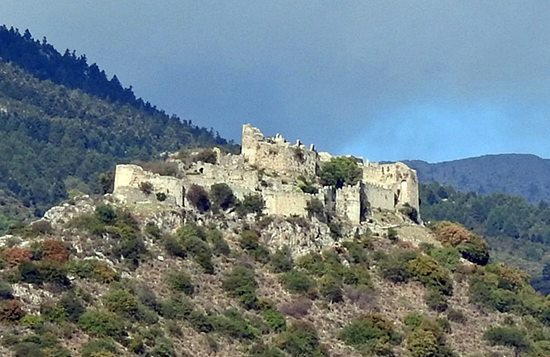
Battle of Prinitza |
year: 1263 |
| A victory of the Franks of the Principality of Achaea | ★ ★ ★ ★ ★ |
|
enemy: Franks
|
location: Printiza, near the village Chrysochori of Arcadia, not far from Ancient Olympia, Peloponnese, Greece
|
accuracy:
●●●●●
|
|
battle type: Surprise Attack |
war: Byzantine-Latin Wars |
modern country:
Greece |
| ▼ The Byzantines(emperor: Michael VIII Palaiologos) | ▼ The Enemies | |
| Commander: | Constantine Palaiologos | Jean de Katavas (or Jean de Carabas) |
| Forces: | 3,000 – 4,000 | 312 knights |
| Losses: | no losses |
| Background story: |
| At the Battle of Pelagonia (1259), the forces of the Byzantine emperor Michael VIII Palaiologos had killed or captured most of the Frankish nobles of the Principality of Achaea, including the Prince William II of Villehardouin (r. 1246–1278). In exchange for his freedom, William agreed to hand over a number of fortresses in the southwestern part of the Moreas peninsula and Achaea to become a vassal of Byzantium. In early 1262, William was released, and the forts of Monemvasia, Mystras and Maini were handed over to the Byzantines. Soon after his return, however, William asked the help of Pope and suggested a joint action against Palaiologos. In July, Pope Urban IV nullified William's oaths to the emperor, and appealed to the Western kings for aid against the “schismatic” Byzantines. In late 1262, William visited the region of Laconia accompanied by an armed retinue. Despite his concessions to the Byzantines, he still retained control of most of Laconia, in particular the city of Lacedaemon (Sparta) and the barony of Passavant (Passavas). This demonstration of power worried the Byzantine garrisons, and the local governor, Michael Kantakouzenos, sent to Emperor Michael to ask for aid. In response, the emperor quickly organized an expedition headed by his half-brother, the sebastocrator Constantine Palaiologos with the parakoimomenos John Makrenos and the megas domestikos Alexios Philes as subordinate commanders. This army, composed chiefly of 1000–1500 Turkish mercenaries and 2000 Greek troops from Asia Minor, was transported to Monemvasia on Genoese vessels, while the small Byzantine fleet was sent to harass the Latin island holdings in Euboea and the Cyclades. |
The Battle: |
 Castle of Mystras During William's absence, Andravida had been left in the charge of John Katavas (or Jean de Carabas), a man known for his bravery but now old and suffering from gout. According to the Chronicle of Moreas, upon learning of the approach of the enemy, Katavas took the 312 horsemen available and marched out to meet the Byzantines, whose numbers are variously given as 15, 18, or 20 thousand. It is certain that these figures are greatly inflated, and the Byzantine army must have numbered a few thousand at most. Either way, it considerably outnumbered the Latin force. The Byzantines were confident of their own strength, and were reportedly dancing and singing. At a narrow pass at Prinitza (near Ancient Olympia), Katavas attacked the Byzantine army and inflicted a resounding defeat upon it; many Byzantine soldiers were killed, while the remainder scattered and sought refuge in the surrounding woods. The sebastokrator Constantine himself barely escaped with his life, and fled with the remainder of his troops to the safety of Mystras. Having won a major victory, Katavas prudently refused to pursue the Byzantines and returned to Andravida. |
Aftermath: |
| Next year Palaiologos was defeated again in Makryplagi and thus the Latin rule in Peloponnese was secured for another generation. |
|
|
